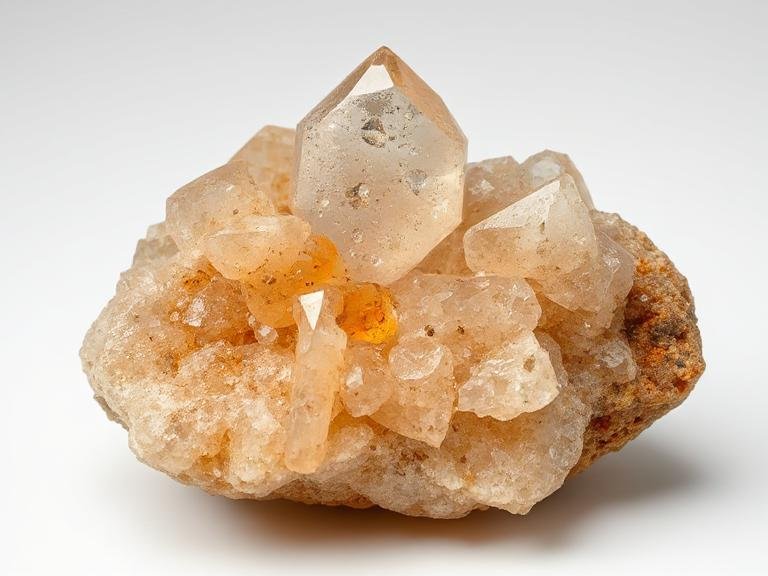Table of Contents
- Introduction to Ferruginous Quartz
- Benefits of Ferruginous Quartz
- Properties of Ferruginous Quartz
- Applications of Ferruginous Quartz
- Summary Table
Introduction to Ferruginous Quartz

Ferruginous quartz is a unique form of quartz that contains iron oxide inclusions. It typically appears as a reddish-brown stone, but its color can vary depending on the concentration of iron within the quartz. This type of quartz is considered to have specific benefits due to the presence of iron, making it a valuable material in both industrial and decorative applications.
Ferruginous quartz is found in various geological environments and is typically mined for use in construction, electronics, and scientific research. This type of quartz is distinct due to its ability to provide both aesthetic appeal and functional properties that differ from standard clear quartz.
Benefits of Ferruginous Quartz
- Durability: Ferruginous quartz is highly durable and resistant to heat, making it ideal for industrial applications that require tough, high-performance materials.
- Magnetic Properties: The iron content in ferruginous quartz imparts mild magnetic properties, which can be beneficial in certain technological and research applications.
- Enhanced Aesthetics: The unique reddish-brown coloration provides a distinct look, making it desirable in decorative items such as jewelry, sculptures, and ornamental objects.
- Corrosion Resistance: Ferruginous quartz exhibits good resistance to corrosion, especially in high-temperature environments, which makes it suitable for specialized applications in harsh conditions.
Properties of Ferruginous Quartz
Ferruginous quartz possesses several unique properties that differentiate it from other forms of quartz. Here are some of the key characteristics:
- Composition: Ferruginous quartz is primarily made up of silicon dioxide, with significant iron oxide inclusions that give it its distinctive color and properties.
- Color: The iron oxide inclusions can result in a variety of colors, from deep reddish-brown to light brown hues.
- Hardness: It ranks around 7 on the Mohs scale of hardness, similar to regular quartz, making it resistant to scratching and wear.
- Transparency: While most ferruginous quartz is opaque due to the iron inclusions, some varieties may exhibit a slight translucency.
- Thermal Stability: Like other forms of quartz, ferruginous quartz has excellent thermal stability and can withstand high temperatures without losing its structural integrity.
Applications of Ferruginous Quartz
Ferruginous quartz is used in a wide range of applications due to its unique properties. Some of the most common uses include:
- Decorative Pieces: Due to its striking color and aesthetic appeal, ferruginous quartz is often used in decorative objects such as sculptures, countertops, and jewelry.
- Semiconductor Manufacturing: The high-temperature resistance of ferruginous quartz makes it suitable for use in semiconductor fabrication, where precision and durability are essential.
- Scientific Instruments: Ferruginous quartz is also used in the construction of various scientific instruments, including laboratory equipment, where durability and heat resistance are critical.
- Quartz Glass Products: Companies like Jiurui Quartz, established in 2010, manufacture high-temperature resistant, corrosion-proof quartz glass products for research labs, semiconductor fabs, and industrial sectors. Their range of quartz products includes:
- Quartz Tubes & Rods13 products
- Custom Quartz Components3 products
- Quartz Flanges & Joints2 products
- Quartz Laboratory Ware6 products
- Quartz Plates & Discs4 products
Summary Table
| Key Point | Description |
|---|---|
| Composition | Silicon dioxide with iron oxide inclusions |
| Color | Reddish-brown, varies based on iron concentration |
| Hardness | 7 on the Mohs scale, similar to regular quartz |
| Applications | Decorative pieces, semiconductor manufacturing, scientific instruments |
| Heat Resistance | Excellent thermal stability, suitable for high-temperature environments |




